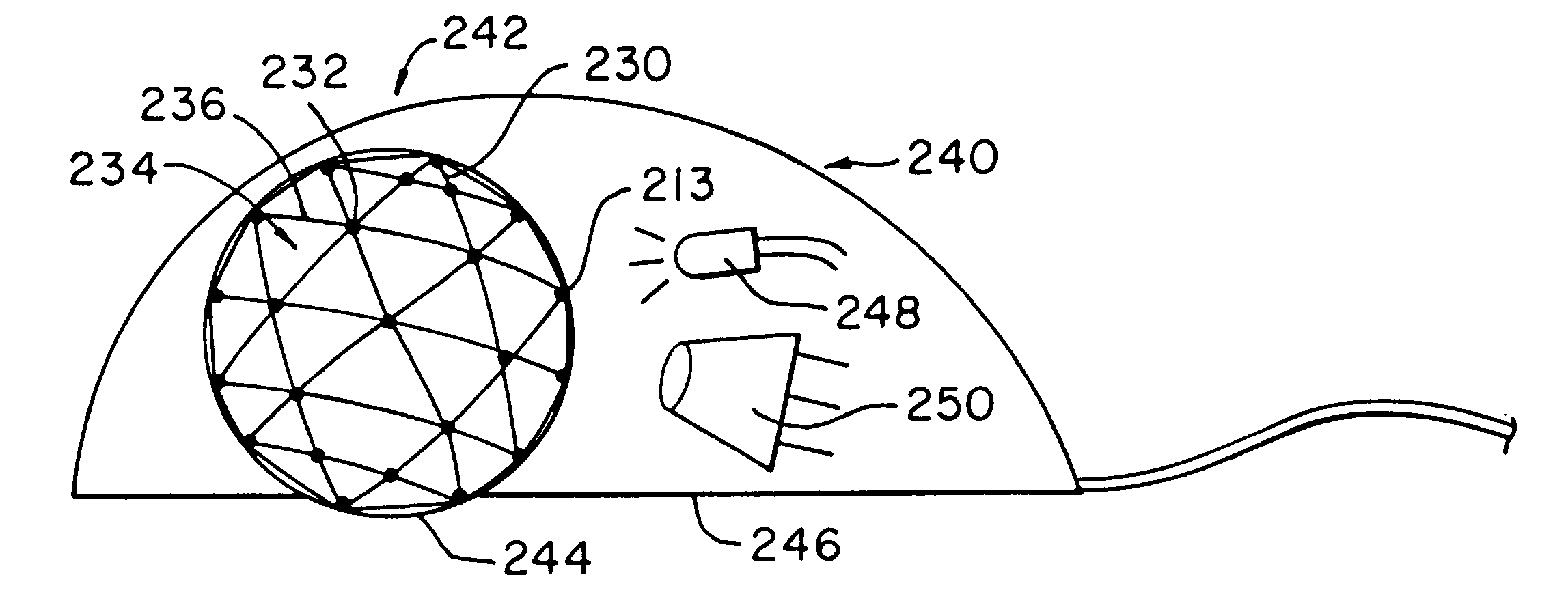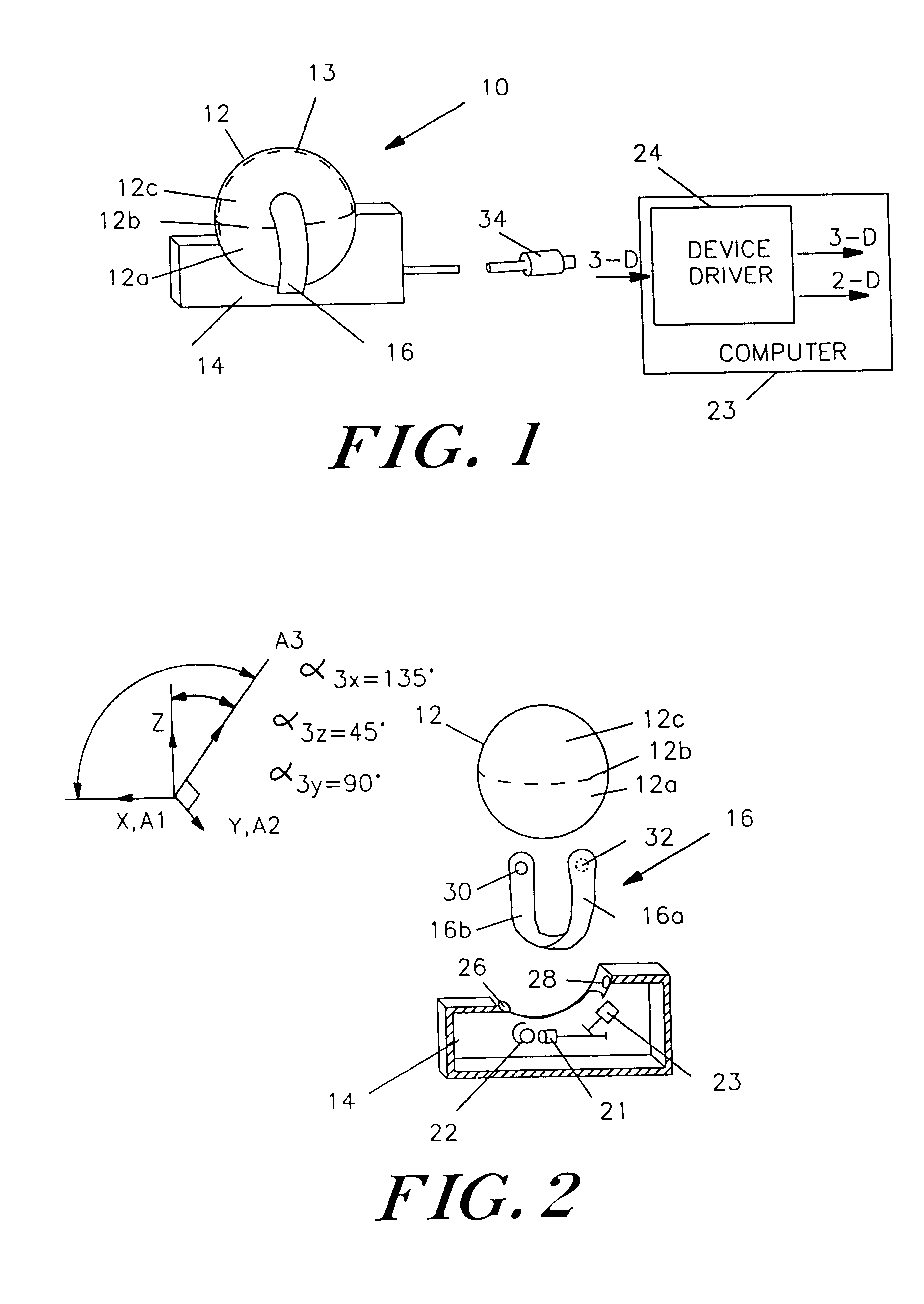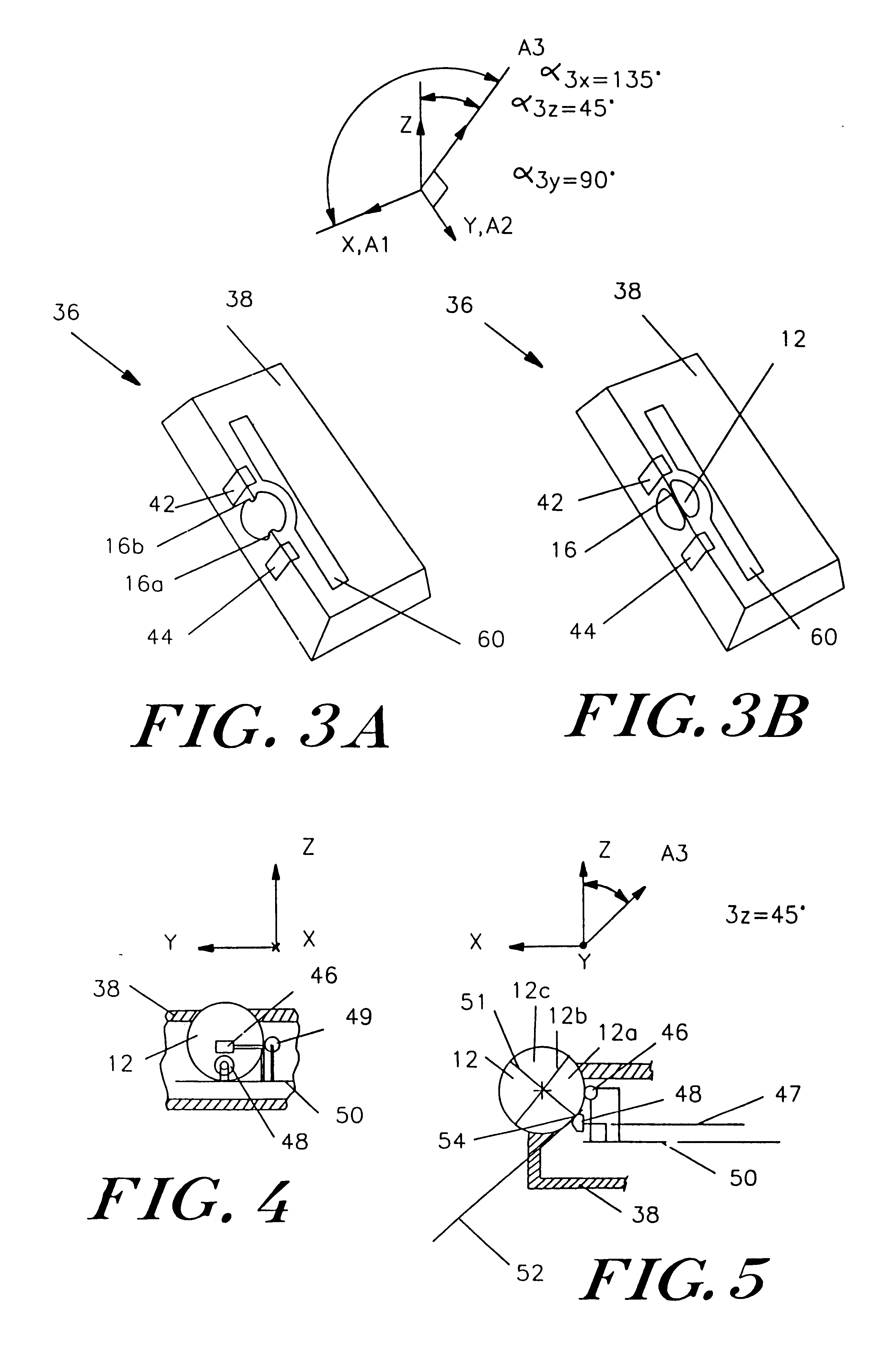Mouse and trackball with optimal measurement optics
- Summary
- Abstract
- Description
- Claims
- Application Information
AI Technical Summary
Benefits of technology
Problems solved by technology
Method used
Image
Examples
Embodiment Construction
of FIGS. 10A-E
Platonic Solids
The Platonics solids are a class of solids which is convex (ball-shaped), has vertices which are all alike, and in which each face is a single kind of polygon. There are exactly five Platonic solids: the tetrahedron, the cube, the octahedron, the do-decahedron, and the icosohedron.
Each of the eight triangular faces 210 of the octahedron maps onto a region covering one-eighth of the sphere surface. The eight sections are bounded and separated by three mutually perpendicular planes. Each vertex 212 connects four triangles. When these triangles are mapped onto the sphere surface, the corners angles of each region increases, from 60 to 90 degrees. Thus, the isosceles triangles are severely distorted in the mapping process.
Similarly, the four faces of the tetrahedron and eight faces of the cube require severe distortion of corner angles to map to a sphere surface.
Icosahedrons
The basic icosahedron 220 shown in FIG. 10e has the greatest number of faces (20) of ...
PUM
 Login to View More
Login to View More Abstract
Description
Claims
Application Information
 Login to View More
Login to View More - R&D
- Intellectual Property
- Life Sciences
- Materials
- Tech Scout
- Unparalleled Data Quality
- Higher Quality Content
- 60% Fewer Hallucinations
Browse by: Latest US Patents, China's latest patents, Technical Efficacy Thesaurus, Application Domain, Technology Topic, Popular Technical Reports.
© 2025 PatSnap. All rights reserved.Legal|Privacy policy|Modern Slavery Act Transparency Statement|Sitemap|About US| Contact US: help@patsnap.com



